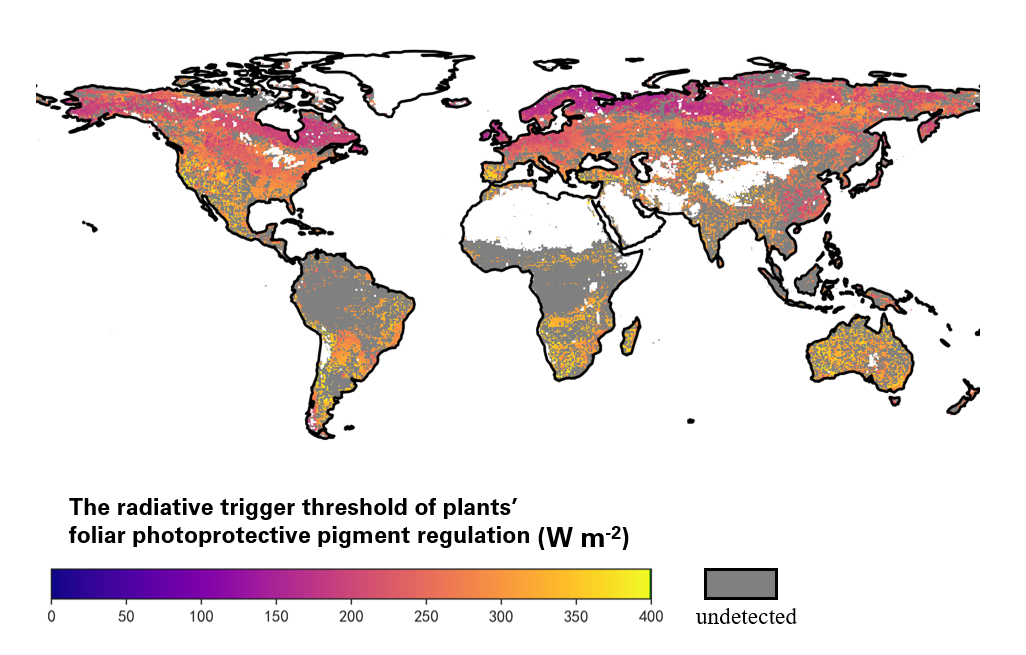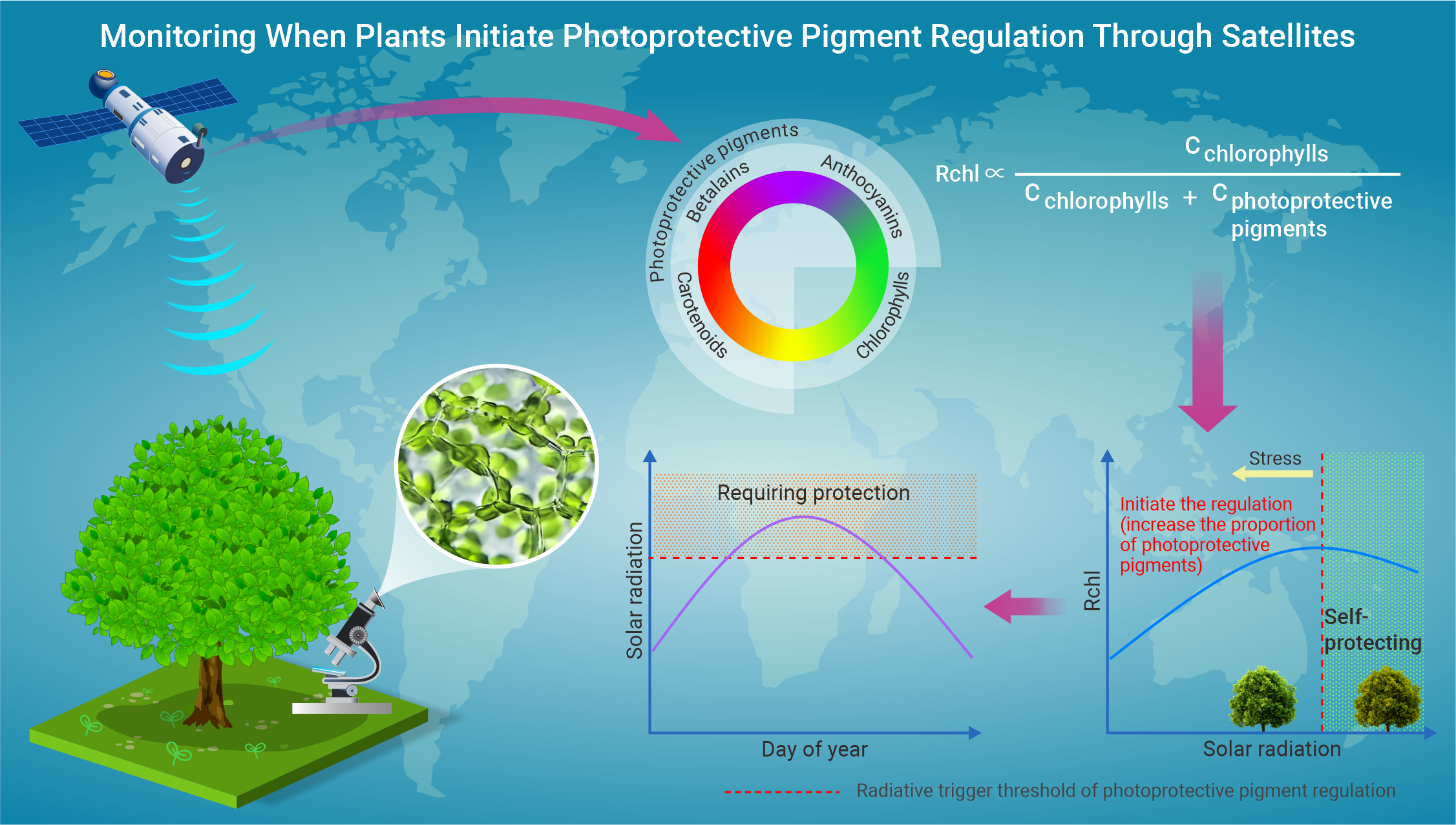First-Ever Satellite Monitoring of Leaf Photoprotective Pigment Regulation in Global Vegetation
Jun 07, 2024
Photoprotective pigments in plant leaves protect them from damage caused by excessive sunlight. Changes in these pigments are essential for plants to survive in harsh environments and serve as indicators of environmental stress. However, understanding when and where these adjustments occur across diverse ecosystems has been challenging due to difficulties in observing them on a large scale.
Researchers at the Aerospace Information Research Institute (AIR) with the Chinese Academy of Sciences (CAS) proposed a novel approach to assess dynamics in photoprotective pigments (carotenoids, anthocyanins, and betalains) at the canopy level. This advancement reveals the climatic conditions under which these adjustments typically occur across various global land ecosystems, providing insights into plant adaptation to detrimental environments.
The study, led by Associate Professor WU Wenjin, was published in The Innovation in May 2024. It presents the first global map of radiative trigger thresholds for plants' foliar photoprotective pigment regulation under prevailing environmental conditions.
The study found that the global average radiative trigger threshold for foliar photoprotective pigment regulation is 262±50 W m-2. This threshold tends to be lower at high latitudes and peaks near 40° in both the northern and southern hemispheres.
Temperature has a stronger impact on this latitudinal pattern than humidity. In the future, this threshold is expected to decrease in northern high latitudes, making these areas more vulnerable to the same levels of radiation levels due to negative warming responses.
Using this threshold, researchers have identified a high-stress zone around 60° N. This zone is predicted to shift southward in the future, indicating changing stress patterns for plants in those regions.
These findings bridge critical gaps in photoprotection research and offer a new perspective on understanding the biogeochemical cycles of global ecosystems. This framework can also enhance our ability to predict the fate of diverse ecosystems under future climate conditions.

The radiative trigger threshold of plant’s foliar photoprotective pigment regulation. (Image by AIR)

Monitoring when plants initiate photoprotective pigment regulation through satellites. (Image by AIR)
Contact: luyq@aircas.ac.cn



News & Events